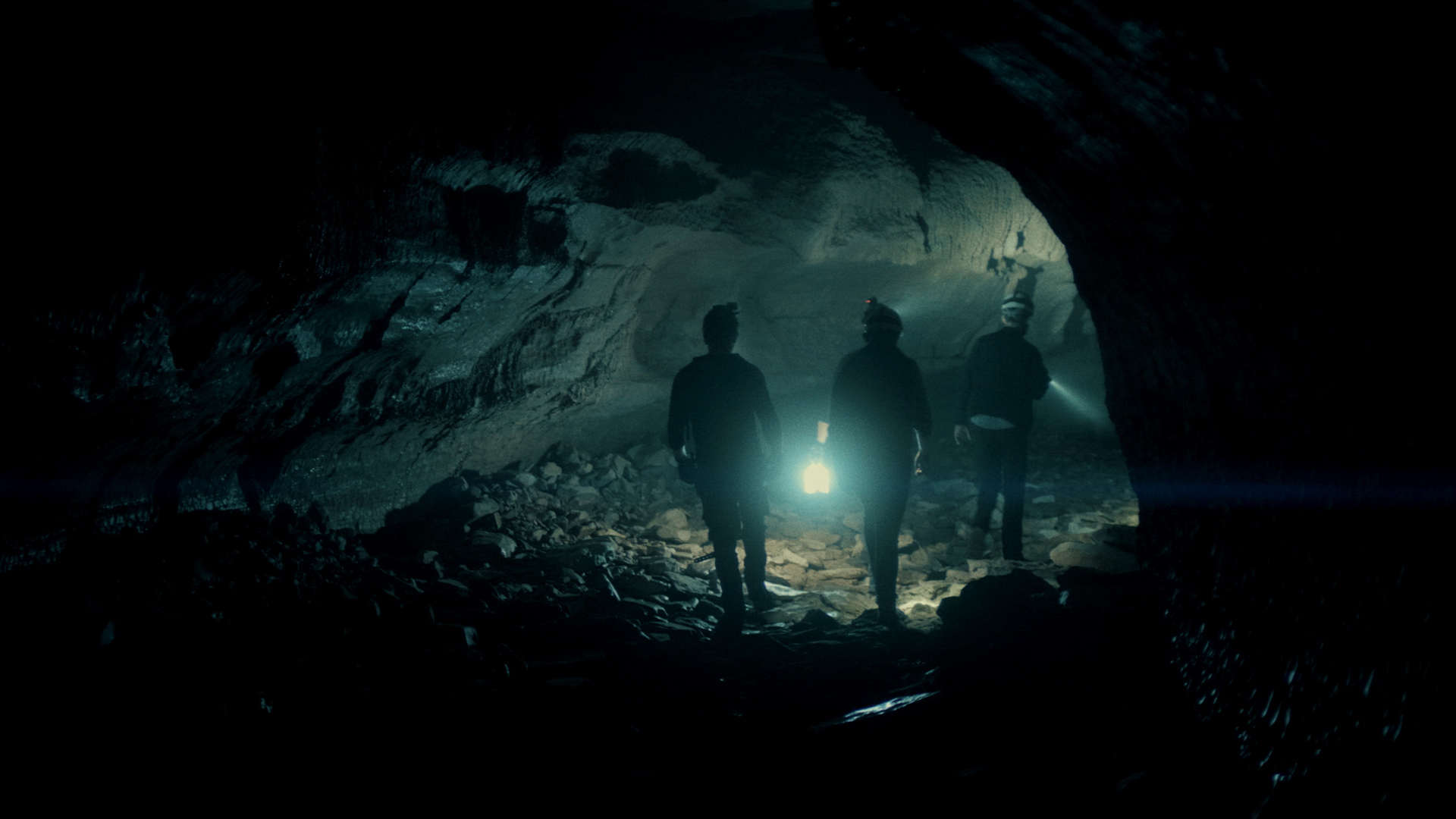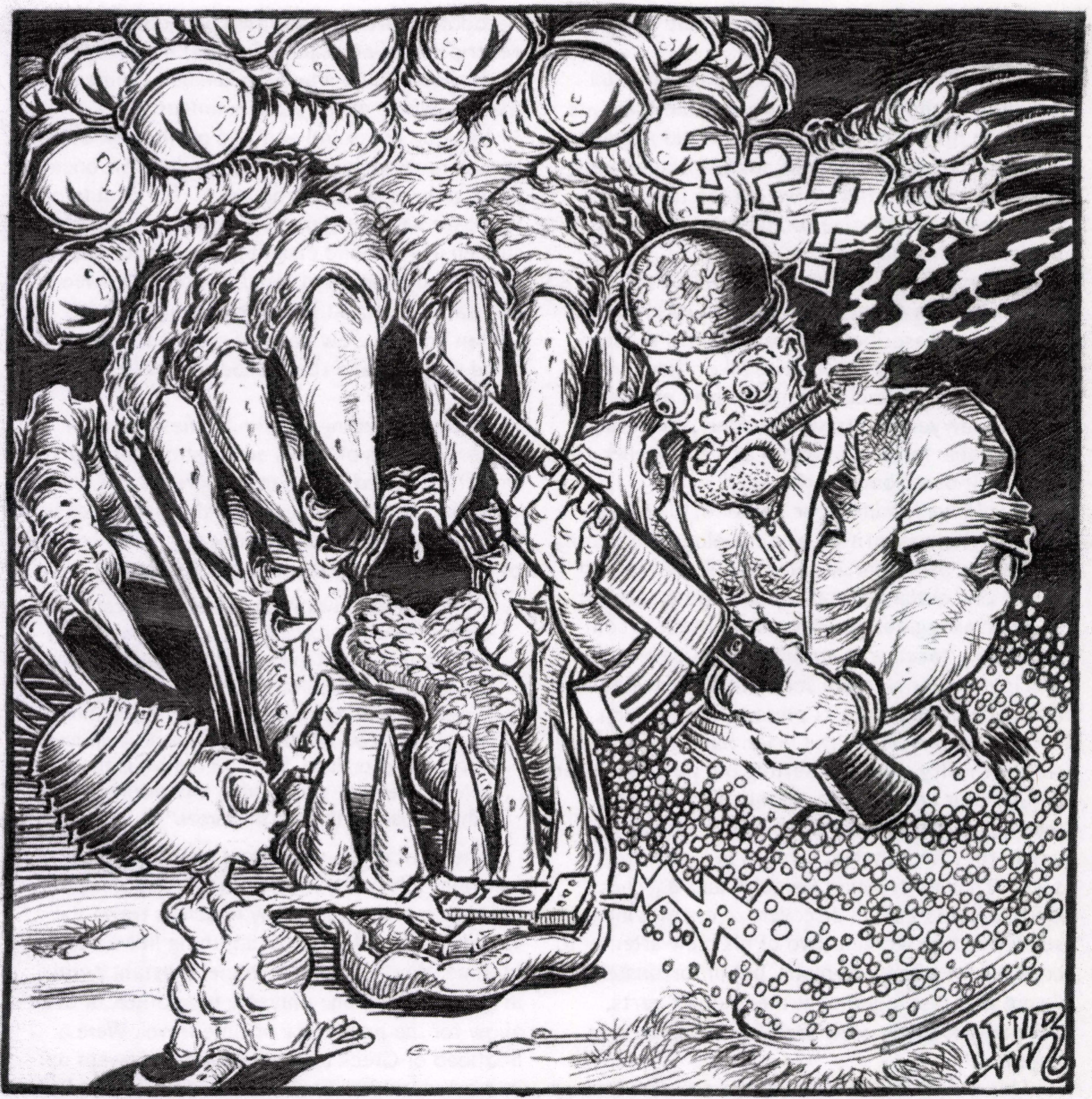
True History of Man in Space
- April 10, 2016
- 0
Can Lucian’s True History Explain Legends of Missing Warriors?
by Steve Ahlquist
” … for this one thing I confidently pronounce for a truth, that I lie … for I write of matters which I neither saw nor suffered … Let no man therefore in any case give any credit to them.”
– Lucian, True History, translated from the Greek by Francis Hicks (1902)
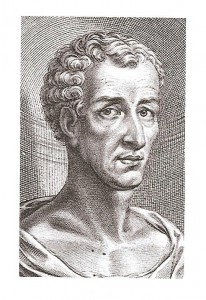 The history of mankind has been one of continual warfare. As a species we have mastered many arts, magics and sciences, and turned them all towards the destruction of each other. We are so warlike that many authors have imagined that the purpose of the world is to breed warriors like ourselves. Perhaps powerful aliens with great minds but puny stature occasionally harvest our greatest warriors to fight distant wars on strange planets and in other dimensions.
The history of mankind has been one of continual warfare. As a species we have mastered many arts, magics and sciences, and turned them all towards the destruction of each other. We are so warlike that many authors have imagined that the purpose of the world is to breed warriors like ourselves. Perhaps powerful aliens with great minds but puny stature occasionally harvest our greatest warriors to fight distant wars on strange planets and in other dimensions.
It would certainly explain the disappearance of soldiers and battalions gone missing in action. These men and women might vanish from the killing fields of Earth only to reappear on board a starship or in the trenches of some alien world, armed with unthinkably advanced weaponry. According to this concept, throughout the galaxies the race of man is feared as the fiercest, most powerful warrior, the perfect mix of strength and mind, and adaptable to any circumstance.
Sometimes whole crops of warriors may be harvested. Consider the disappearance of the Amazons, warrior women lost to history. Consider Atlantis, or the mound builders of ancient North America. Did mankind truly exterminate the Neanderthals, or have our human-like cousins simply been harvested and shipped off to war in some hellish conflict?
If a soldier taken from Earth were to survive his distant service, how could he hope to be treated by his alien masters? Would they return him to Earth, where he would live out his days being considered a man driven insane by his experiences in war? Today we would say such a person has post-traumatic stress syndrome, and discount his story. Perhaps the soldier would be disposed of in the same way we might ship a race horse past its prime to a glue factory.
Is it possible that a soldier, or a group of them, might return to Earth either through escape or through the benevolence of their captors? Perhaps a clever human could master enough of the alien science and technology to return to Earth. Weapons do have a tendency to be turned against those who wield them. Humanity, armed with advanced weaponry far away on a distant world, might be more than our creators could handle.
This brings us to Lucian’s True History, the oldest surviving account of a man voyaging to the moon. As the opening quote amply demonstrates, Lucian prefaced his work with his admonition that nothing he writes should be taken the least bit credulously. In fact, the quote is only a tiny sampling of his pages of denials as to the veracity of his tales, but are denials enough to completely dismiss his assertions? As Shakespeare might say, he “doth protest too much.”
We might be inclined to believe Lucian, and take him as the liar he claims to be, but there are details in his history, details that would make no sense to his contemporaries and translators until relatively recently. Before we get too deeply into that, however, let’s give some background on Lucian and his True History. Lucian lived from approximately 125 AD to 180 AD. He was an
Lucian lived from approximately 125 AD to 180 AD. He was an Assyrian Greek who has had over eighty works ascribed to him, but most modern experts agree he did not write all of them. He worked as a rhetorician, which is sort of like our modern lawyer, and traveled widely, collecting considerable fame and wealth as a storyteller. He was a self-described “barbarian.” True History, admits the author in his roundabout style, was written as a travelogue to parody the stories of Homer and Herodotus. He wanted to pile one outlandish tale upon another, adding as much exaggeration as possible. Modern commentators, ta ken with its story of space travel and interstellar war, are sometimes interested in approaching the story as proto-science fiction. The story starts with Lucian having outfitted a ship with fifty crew and setting out past the Straits of Gibraltar and into the Atlantic Ocean. After many days of
True History, admits the author in his roundabout style, was written as a travelogue to parody the stories of Homer and Herodotus. He wanted to pile one outlandish tale upon another, adding as much exaggeration as possible. Modern commentators, ta ken with its story of space travel and interstellar war, are sometimes interested in approaching the story as proto-science fiction.
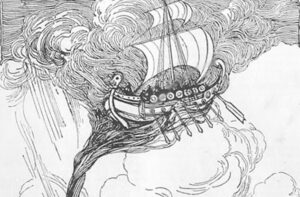 The story starts with Lucian having outfitted a ship with fifty crew and setting out past the Straits of Gibraltar and into the Atlantic Ocean. After many days of travel the boat arrives at an island where they find a tablet written in Greek that says, “Thus far traveled Hercules and Bacchus.” On this island Lucian discovers rivers of wine and seductive tree women. Two of his crew attempt to copulate with these nymphs, but unfortunately,
The story starts with Lucian having outfitted a ship with fifty crew and setting out past the Straits of Gibraltar and into the Atlantic Ocean. After many days of travel the boat arrives at an island where they find a tablet written in Greek that says, “Thus far traveled Hercules and Bacchus.” On this island Lucian discovers rivers of wine and seductive tree women. Two of his crew attempt to copulate with these nymphs, but unfortunately,
“were knit fast together at their nether parts, from whence they grew together and took root together.”
This part of the story is no more or less strange than anything in Homer’s Odyssey. It is because of the many fantastic elements present in the works of Homer that it was so long viewed as mythology. It was only when the Iliad was viewed as history by Heinrich Schliemann that the ancient city of Troy was rediscovered and the works of Homer were verified as historical. The works of Herodotus, the so-called “father of history,” are filled with similarly weird events; yet, vast parts of Herodotus have been verified as factual. Lucian’s description of an island inhabited by strange creatures should in no way be taken as an indication that the whole of the work is untrue. Leaving the island and two of his crew behind, Lucian re-provisioned his ship and set off once again toward lands unknown. ” … but about noon, when we had lost sight of the island, upon a sudden a whirlwind caught us, which turned our ship
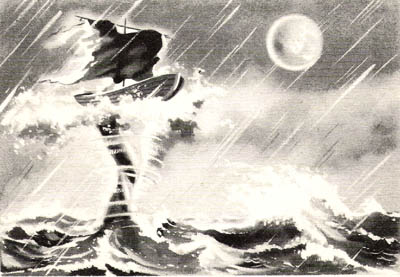 Leaving the island and two of his crew behind, Lucian re-provisioned his ship and set off once again toward lands unknown. ” … but about noon, when we had lost sight of the island, upon a sudden a whirlwind caught us, which turned our ship around about, and lifted us up some three thousand furlongs (375 miles) into the air. .. ” Lucian and his crew became suspended, their sails filled with air, and they sailed for seven days and nights.
Leaving the island and two of his crew behind, Lucian re-provisioned his ship and set off once again toward lands unknown. ” … but about noon, when we had lost sight of the island, upon a sudden a whirlwind caught us, which turned our ship around about, and lifted us up some three thousand furlongs (375 miles) into the air. .. ” Lucian and his crew became suspended, their sails filled with air, and they sailed for seven days and nights.
Not withstanding the similarities between Lucian’s means of travel and that of Dorothy’s from The Wizard of Oz, the description of a whirlwind that transports someone through space bears some resemblance to the modern physics concept of the wormhole. According to Wikipedia;
“In physics, a wormhole is a hypothetical topological feature of spacetime that is fundamentally a ‘shor tcut’ through space and time. Spacetime can be viewed as a 2D surface, and when ‘folded’ over, a wormhole bridge can be formed. A wormhole has at least two mouths that are connected to a single throat or tube. If the wormhole is traversable, matter can ‘travel’ from one mouth to the other by passing through the throat.”
Theoretically, a wormhole could be created by a very advanced race of aliens, and it may be the only possible means by which to travel the vast distances of space in anything like a human lifetime. Wormholes can connect distant points in space, bridge one universe to another, or even allow for the possibility of time travel. Were a boatload of Greek explorers suddenly swept up into a “whirlwind,” suspended in the air, and then transported interstellar distances from the Earth, they might be forgiven for not realizing that they had actually crossed an Einstein-Rosen Bridge.
The detail of the sails being suddenly filled with air is also telling. From our position here in Lucian’s distant future, we know that there is no air in space, and that all sailors aboard the wooden Greek sailing ship would have instantly perished in the extremes of space. But the sails filling with air indicates that whatever alien race snatched
our Greek sailors also supplied them with air (and presumably warmth) for their journey. According to Lucian, ” … on the eighth day we came in view of a great island, of a round proportion, gloriously glittering with light, and approaching to it, we there arrived, and took land.”
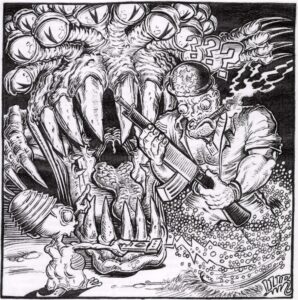
Once landed, our travelers found the land to be inhabited. When night came, Lucian could see other “islands,” one of which he took to be the Earth due to his ability to see the cities and seas. Of course, we know this to be impossible. The only manmade structure visible from near Earth orbit would have been the Great Wall of China, a structure with which Lucian would not have been familiar. Also, after seven days’ travel through a wormhole, the crew could be thousands of lightyears from near-Earth orbit.
It is much more likely that Lucian and his crew were brought aboard a large spaceship or starship. From here they could observe moons, stars and planets, and in their naivete come to believe and planets, and in their na’ vete come to believe that one of the planets spied was the Earth. Here the band of Greeks meet their first aliens, the Hippogypians, men riding on three-headed “horsevultures.” These horse-vultures are described as gigantic, with every feather longer than the mast of a ship. This kind of exaggeration is typical of Lucian. He describes men riding mounts similar in size and form to King Ghidorah, enemy of Godzilla. The actual creatures would have been slightly larger than horses, at best.
The Hippogypians bring Lucian and his men to a human of Greek descent named Endymion, who describes himself as the “King of the Moon.” Here Lucian writes,” … rapt up long since from the Earth as he was asleep, and brought hither, where he was made king of the country … ” The use of the word “rapt” is interesting. One definition is “to be carried off spiritually to another place, sphere of existence, etc.” Here we learn of a human who falls asleep one night and is transported to another world. This corresponds nicely with modern UFO abductions. The fact that Endymion was made a “king” more likely indicates that he has been put in charge of the war to come. It seems that the beings responsible for har vesting warriors from Earth might have little capacity for war: They perhaps need the warrior mind of a human to guide their battles.
Lucian begins to explain that he and his crew have been brought to the moon, which is at war with the Sun, also populated and led by a king named Phaethon. This is by our knowledge today plainly impossible, but looked at from Lucian’s point of view, he is describing to an audience in 160 AD an interstellar war. He has carefully introduced the concept that the planets above us are like islands, inhabited by strange beings.
In the days before Copernicus, the Earth was still at the center of the world. The audience of the time would not have understood Lucian unless he phrased his celestial adventures as taking place within the architecture of heavens as understood at that time. So instead of some distant alien planet being at war with another, the armies of the moon are at war with the armies of the Sun.
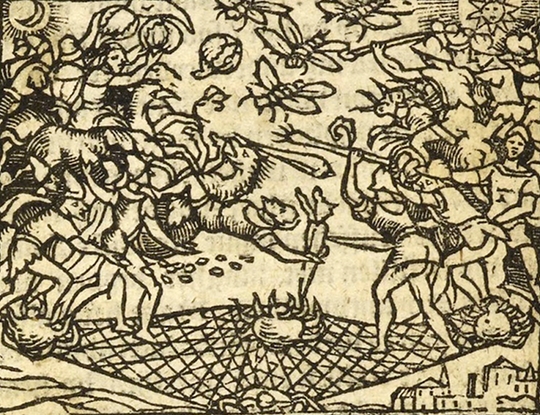 The cause of the war is one we have seen time and again in our own history. The people of the
The cause of the war is one we have seen time and again in our own history. The people of the
“moon” attempted to colonize another planet (a planet Lucian refers to as the morning star, what we would call Venus, but of course we can read this as a distant world). Phaethon’s armies prevented this colonization with a mind to colonize the world himself. Lucian and his band of Greeks are invited to participate in the coming battle.
After a great feast and a night’s rest, Lucian and his men are each given Hippogypian mounts. Lucian describes the army amassed as numbering about 100,000 troops. In addition to the mighty three-headed horse-vultures, the army consists of many other fantastic alien beings. There are “mighty great fowl” with leaves instead of feathers, called Lachanopters. There are the Cenchrobolians and Scorodomachians, which Lucian declines to describe.
Allies called Psyllotoxotans arrive from the
“Bear Star” 1 riding great flea-like insects as large as ten elephants. The Anemodromians are the army’s footmen, with special adaptations in their legs that allow them to fly. Additional allies are expected, but Lucian describes them by name only: Struthoba lania ns (ostrich-acorns) and Hippogera nia ns (crane-cavalry). Finally, mighty spiders are employed to spin vast webs through space in order to constrain and ensnare the enemy.
Another way of viewing this monstrous army is as different types of spaceships. The various ships could be described as being like insects, birds of prey, or even one-man battle suits. The spiders might be specialized ships built to dispense “webs of energy.” Lucian and his crew of Greek warriors would find that these ships have advanced computers on board that merge with the nervous systems of the pilots. No training would be needed; the ships are designed to work seamlessly with humans.
Arrayed against Endymion and his Greek allies (or conscripts) are the armies of Phaethon, every bit as fantastic. In addition to his armies, Phaethon has allies from Sirius2 and “the Milky Way.” Lucian says that when the armies of the Milky Way failed him, Phaethon “in displeasure over-ran their country.”
The battle is as grand as one might expect, and things go well initially for Endymion and Lucian. But the war is lost upon the arrival of Phaethon’s allies, the Nephelocentaurs, gigantic flying beings, half-man and half-horse, each as large as the Colossus of Rhodes. They are led, says Lucian, by Sagittarius himself. The war lost, Lucian and two of his men are taken captive. Phaethon orders the construction of a gigantic wall that blocks Endymion’s planet from the rays of his Sun. Defeated, Endymion sues for peace, and Lucian is returned to his men.
The war over, Lucian declines the offer to stay forever in the Kingdom of Endymion and re-provisions his ship for a return home. Once the ship returns to Earth it is promptly swallowed by a gigantic whale. Once again I invite you to rethink the traditional reading. The adventures that ensue are so outlandish, and so unlikely to have occurred on Earth, that it becomes obvious that these are adventures occurring in the deep reaches of outer space.
Literal reading of ancient manuscripts flies in the face of conventional literary analysis, with its emphasis on metaphor and meaning. However, if the locusts of the Bible’s Revelations can now be seen as black helicopters, and the fires of Sodom and Gomorrah as nuclear holocausts, is it necessarily wrong to interpret the fantastic creatures of Lucian’s interstellar war as spaceships?
Perhaps one day a future astronaut will utilize Lucian’s True History in the same way Heinrich Schliemann used Homer’s Iliad to find the lost city of Troy. This future astronaut will travel to Sirius or Polaris, and might find the fossilized remains of gigantic insect creatures or the descendents of mighty alien raptors.
It is said that T. E. Lawrence, the famed Lawrence of Arabia, always kept a copy of Herodotus close at hand. Perhaps some future exobiologist or exosociologist will feel the need to keep Lucian’s True History equally close.
Endnotes
1. Polaris is also known as the North Star or the Pole Star. It is 430 light years away. According to the Church of Scientology it is the home planet of the Thetans. In DC Comics it is the star orbited by Thanagar, planet of the Hawk men.
2. Sirius is also known as the Dog Star. It is one of Earth’s closest neighbors, being a mere 8.6 light years away. The ancient Dogon people of Africa are said to have a special relationship and unique knowledge about the star and its inhabitants.
About the Author
Steve Ahlquist is a longtime writer of comics and maker of short films. He is the creator of the cult hit Oz Squad, the Peeny-Boy mini comic, and co-creator of Strange Eggs. His graphic novel, The Weirdly World of Strange Eggs, is available on amazon.com. He has been nominated for the prestigious Harvey Award. He lives in Providence, Rhode Island. His website is www.mythographical.com.

